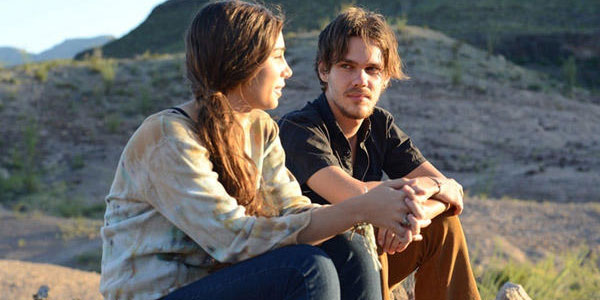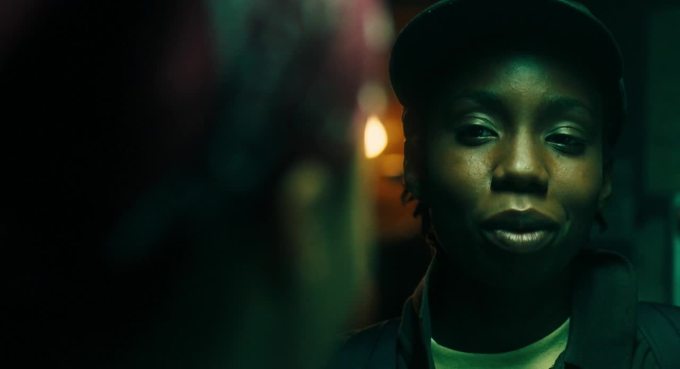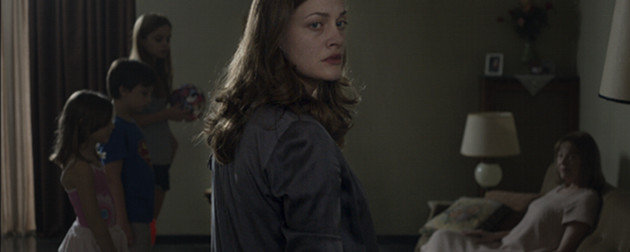
(Originally posted in now-defunct student e-zine FourFrame under the title “Boyhood: The Reservoir Dogs of Coming-of-Age Films”)
Of all Richard Linklater’s qualities, his humanity seems the most boundless. His tireless devotion to the quirks, foibles and saving graces of all people knows no limits. It is this honesty which makes every film of his seem so, for want of a better word, real. However, the “real” has one false step in that it borders on being overly idealistic. I watch his films not quite as myself, but as the self I hope to be, one that is kinder, more patient and more interested in those around me. Whether he’s dealing with a couple snatching moments in Europe, a washed-up musician finding new inspiration or a real-life murderer mortician, Linklater allows the characters to lead the narrative at their own pace, growing, or not, as the case may be. Dealing with Italian Neo-Realism of the post-war period, Amédée Ayfre addressed what he perceived as the genre’s disproportionate interest in the filter of human experience over verisimilitude. Ayfre proposed an alternative term “phenomenological realism” – though the rotoscoped psychedelia of A Scanner Darkly and Waking Life evidence diversions from the “realism,” Ayfre’s term describes Boyhood perfectly.
It would be impossible to discuss Boyhood without mentioning its unique production: 39-day shoot, spanning 12 solid years. It is important to note that the time-jumps, when they happen, very rarely take the form of conventional filmic ellipsis; rather they often seem to be phenomenologically relevant narrative devices regarding Mason Jr. (Ellar Coltrane)’s experience. In interviews, Linklater has implied that Boyhood is more akin to present day Mason Jr.’s memory of past events in his life, than a Bildungsroman simply evolving before us, temporal gaps and all. As such, some years drag whilst others fly by, as is often the case with our own memories of adolescence. The transition through ages is, therefore, not entirely seamless but it is all the more logical for it.
Above all, the incredible, historical feat of this film’s production in no way distracts the viewer from the incredible, historical feat that is the quiet yet utterly profound dignity this film allows the most dysfunctional of families, and especially their children. Just as Béla Tarr devotes up to seven hours at a time to his Hungarian farmers, thieves and reprobates, Linklater employs expertly the requisite directorial humility to celebrate children’s oft-denied agency.
Certainly there are perhaps a few moments in which Mason Jr. and his sister fall intoJuno-isms (slightly unrealistic levels of communicative precociousness). Although given that these moments most often happen around their perpetual man-child biological father (played by Linklater regular, Ethan Hawke), I feel inclined to accept these as further phenomenological distortions. These misrepresentations of reality reflect the shared wavelength between children growing up a bit too fast, and an adult growing up not nearly fast enough.
In many ways, Boyhood is the Reservoir Dogs of coming-of-age films. Just as Tarantino’s debut was able to make a defining bank robber film without ever showing us the bank robbery, Linklater devotes the grand majority of Boyhood’s 166 minute running-time to what one might consider the conjunctions of adolescence, rather than the main events. Patricia Arquette’s maternal character Olivia lists such events near the end of the film (“the time I taught you to ride a bike, the time we thought you might be dyslexic…”) and yet Mason Jr.’s nonplussed reaction seems only to reinforce the idea that human narrative is not conventional narrative. Boyhood‘s strength lies in its devotion to the former.
Many of the big events that shape us are things that happen to others and in turn affect us indirectly: births, deaths, marriages, divorces. Indeed, even during the abusive-relationship arc, we see consequences of actions far more than we see actions themselves. Though the title is Boyhood, as it is seen entirely from Mason Jr.’s perspective, it is a film about a family and the people around it, too. Anything else would be too solipsistic. However, we still experience along with Mason Jr. the perceived insularity of adolescence – at points, other characters seem to rush in and rush out like inversely secondary characters of Rosencrantz and Guildenstern are Dead. The length of the film as well as the deceptive speed with which Mason Jr. does, in fact, seem to grow up means that many characters and events – both the hilarious and traumatic – are surprisingly easily forgotten, but then so easily remembered.Boyhood is only partially defined by what we do not see, however: what we do holds an emotional verisimilitude I have rarely seen before. I was filled with rage and sympathy as Mason Jr.’s hair is coercively cut. My heart beat so hard and fast during the entire arc regarding Olivia’s abusive, alcoholic second husband, I didn’t know if I’d be able to sit through it. I recognised the bemused boredom in constant lectures of responsibility from any passing adult, and the joy of human connections made.
Linklater’s remarkable sense of balance saves Boyhood from over-sentimentality and manages to avoid the classically hokey “it’s the little things that count” revelation. Instead the narrative’s existential nature allows this to be made obvious enough. When, in the final scene, Mason Jr. and Nicole (who may or may not be the girl who passed him a supportive note several years prior) do acknowledge that we do not seize moments as much as “moments seize us” and that “the moment is always right now,” they do so self-consciously high on peyote. They laugh gently at themselves for vocalising what is perhaps a truth only cliché in its universality. Perhaps for the very first time, I was pleased to hear this revelation once again. Firstly, because this film was one of the few works I have ever seen be as emotionally real from the beginning to the end that I felt it had earned its final line. secondly, because of this, its revelation was expressed more articulately than I think I’d ever heard it before.
Due to the nature of my own adolescence, coming-of-age films tend to be brutal experiences for me. I feel no shame or regret in saying, a week later, I am still getting over Boyhood. I am not only glad, but also grateful that this project came to realisation. I thoroughly recommend it to any and all.
*****




